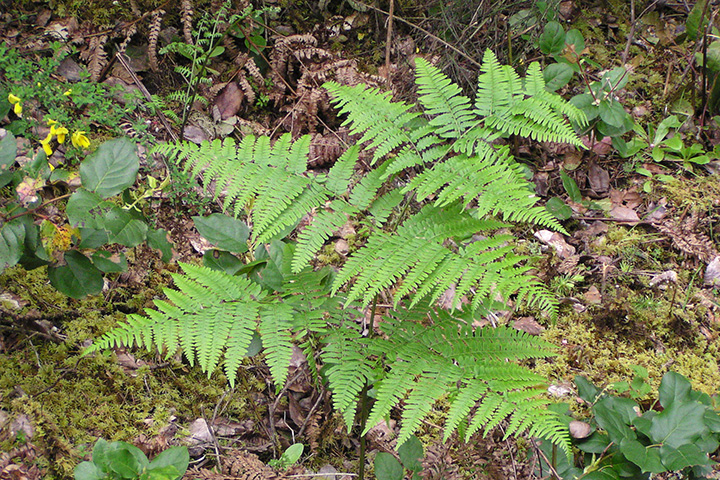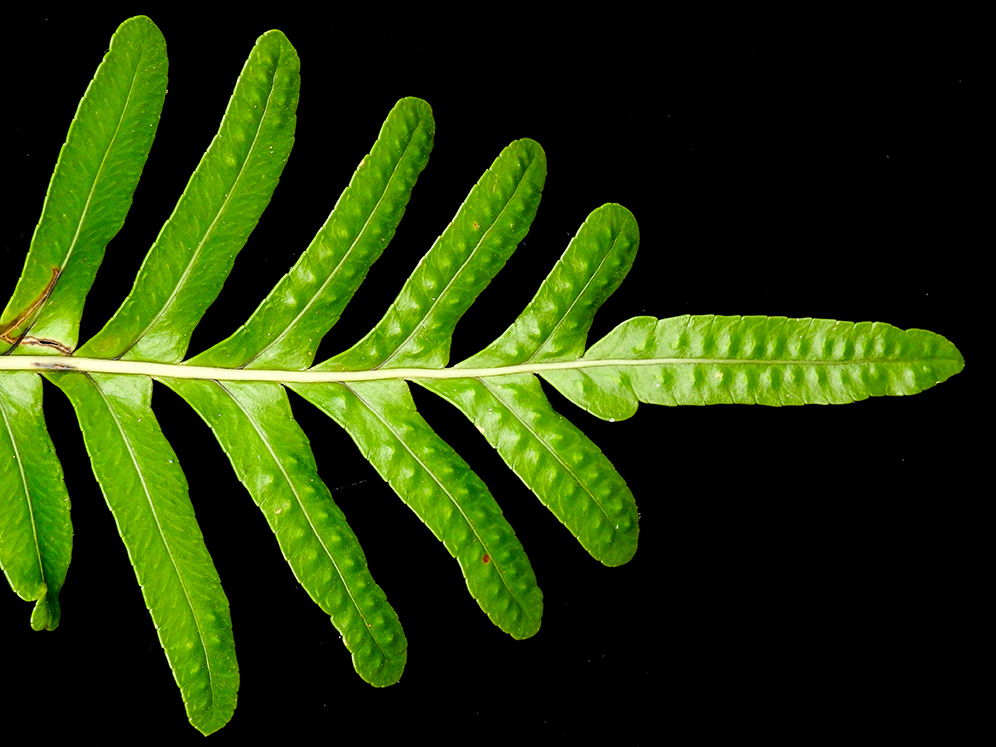Cystopteris fragilis
Fragile fern
Circumboreal
Family: Dryopteridaceae
Native
Small and delicate, this fern inhabits moist soils to dry rocky cliffs throughout the Pacific Northwest. Fronds are light green, generally less than a foot long, tapering at both ends, with only a few hairs at the base. Pinnae are irregularly toothed with branched or forked veins. The plants are rhizomatous. Sori are round, occurring on one or both sides of the pinnule, and halfway covered by a thin indusium. C. fragilis dies back in the winter.






























